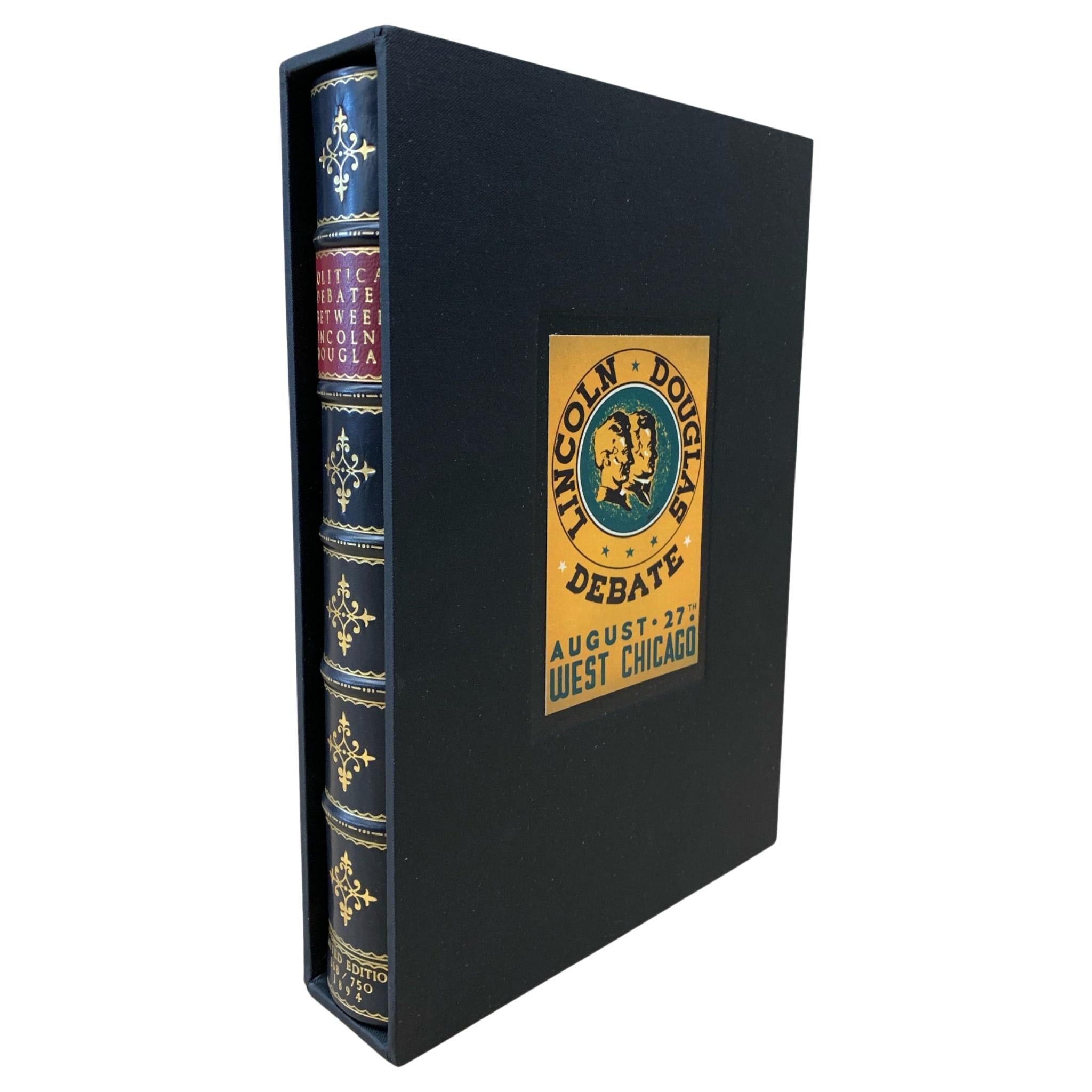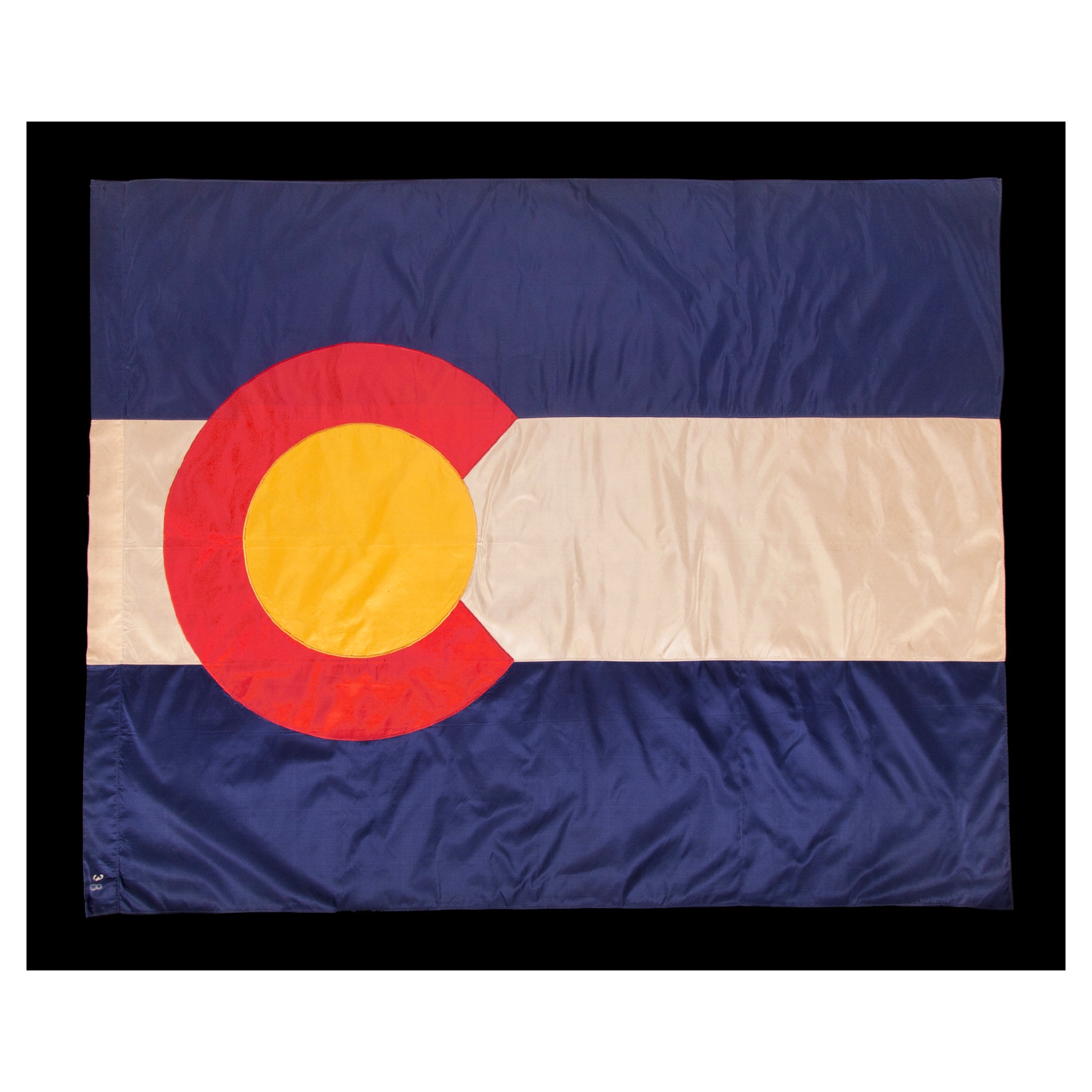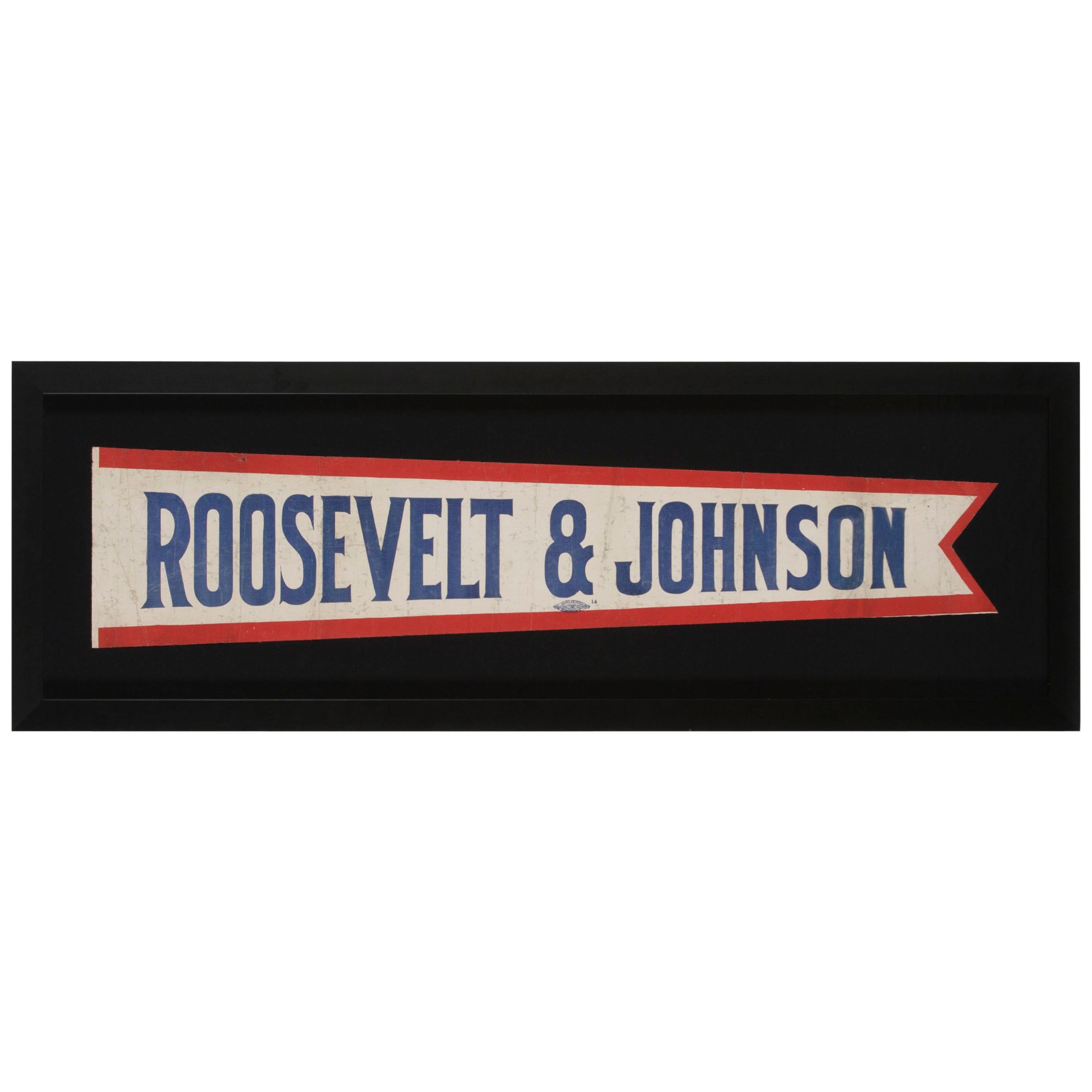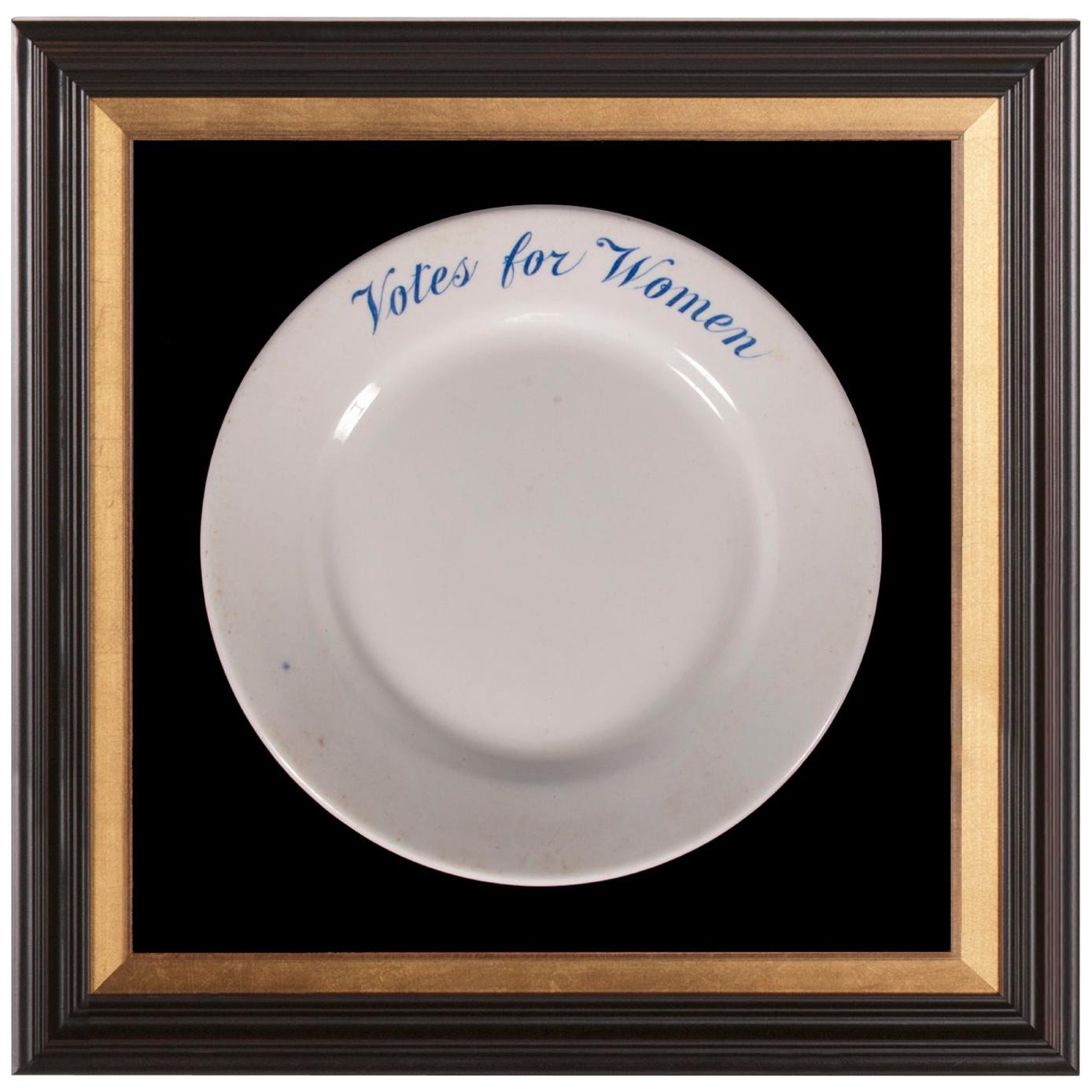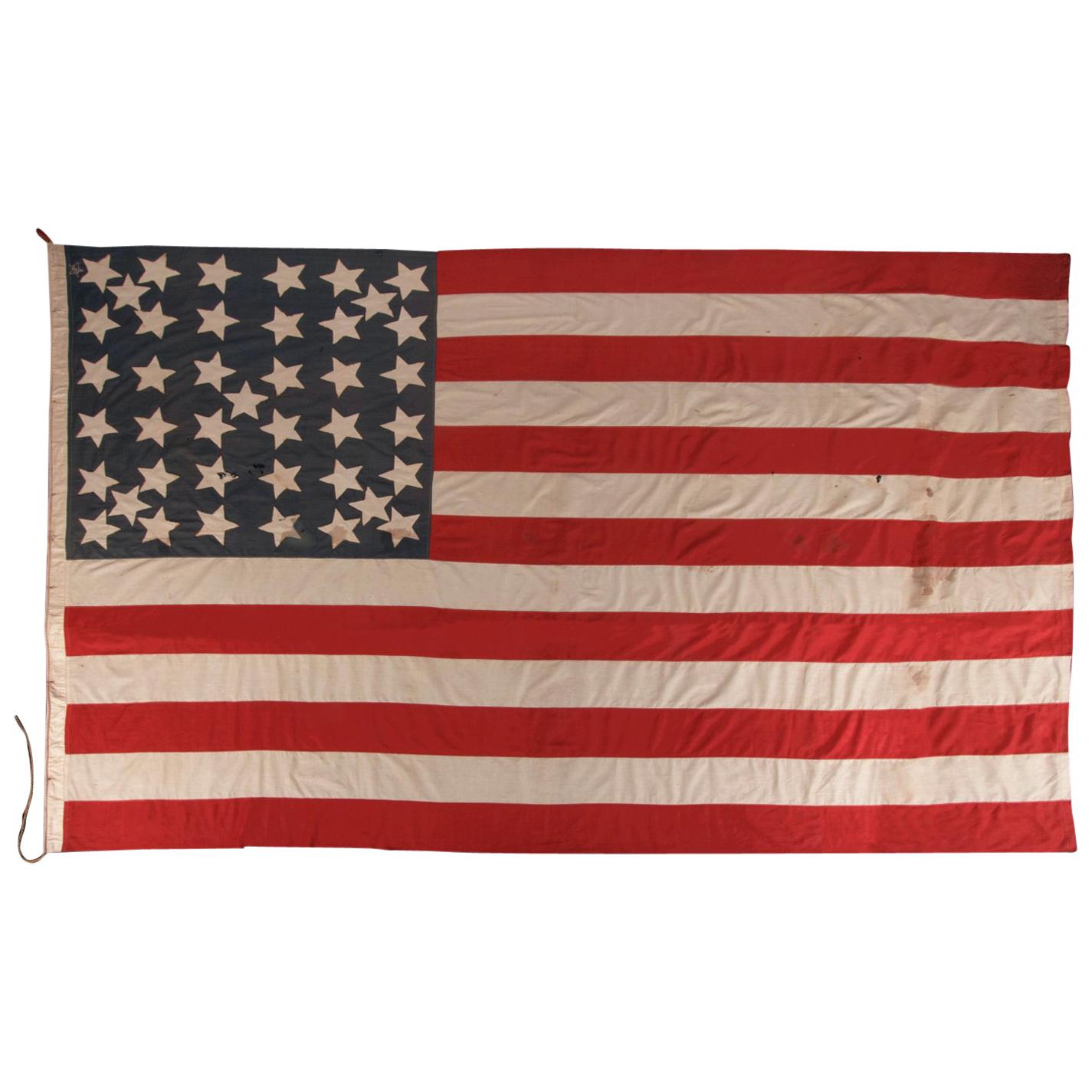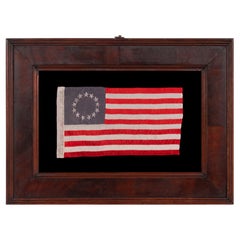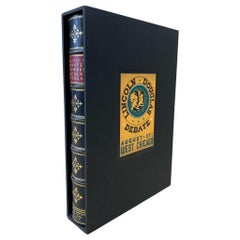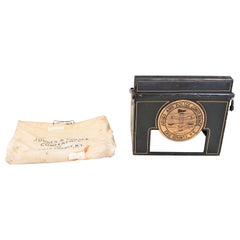
Stevensgraph Bookmark with Lincoln, Made in New Jersey by Phoenix Mfg
View Similar Items
Want more images or videos?
Request additional images or videos from the seller
1 of 6
Stevensgraph Bookmark with Lincoln, Made in New Jersey by Phoenix Mfg
About the Item
- Dimensions:Height: 16.75 in (42.55 cm)Width: 6.5 in (16.51 cm)Depth: 2 in (5.08 cm)
- Materials and Techniques:
- Place of Origin:
- Period:
- Date of Manufacture:1876-1893
- Condition:See Item Description.
- Seller Location:York County, PA
- Reference Number:Seller: pat-6381stDibs: LU849724036802
About the Seller
5.0
Recognized Seller
These prestigious sellers are industry leaders and represent the highest echelon for item quality and design.
Established in 1991
1stDibs seller since 2008
61 sales on 1stDibs
Typical response time: 10 hours
More From This SellerView All
- 13 Hand-Embordered Stars Made by Great-Granddaughter of Betsy Ross, Sarah WilsonLocated in York County, PA13 HAND-EMBROIDERED STARS AND EXPERTLY HAND-SEWN STRIPES ON AN ANTIQUE AMERICAN FLAG MADE IN PHILADELPHIA BY SARAH M. WILSON, GREAT-GRANDDAUGHTER OF BETSY ROSS, SIGNED & DATED 1911: ...Category
Vintage 1910s American Political and Patriotic Memorabilia
MaterialsSilk
- Colorado State Flag, Made of Silk, Ca 1911-1920Located in York County, PACOLORADO STATE FLAG OF EXCEPTIONAL QUALITY, MADE OF SILK, CIRCA 1911-1920’s, EXTRAORDINARILY RARE IN THIS PERIOD AND THE EARLIEST EXAMPLE THAT I HAVE EVER ENCOUNTERED Early state flags are few and far between. While I am asked for them constantly, most states did not actually have official flags until the 20th century. On May 6th, 1911, Colorado became among the last to adopt a design. The project of doing so was spearheaded by the Denver Chapter of the Daughters of the American Revolution. The bill was introduced by Senator W.H. Sharply and adopted by the Eighteenth General Assembly. The artwork was the product of A.C. [Andrew Carlisle] Carson, President of the Ohio Society of Colorado. The meanings behind the elements in the design are as follows: The large letter "C" stands for Colorado and simultaneously for the Centennial State (Colorado entered the Union in 1876, the year in which our nation celebrated its 100th anniversary of independence), as well as the Columbine State (reflecting the state flower). The red color is included due to the fact that the word Colorado translates to scarlet or red in Spanish. The circle represents the sun, while the gold color symbolizes all-the-year sunshine, Colorado’s status as the greatest gold state, and one Columbine color. It was also included so that the Colorado state flag would have one more color than the U.S. flag. The color white reflects Colorado’s status as the greatest silver state, its eternal mountain snow, and one Columbine color. Lastly, the shade of Yale blue symbolizes all-the-year blue sky and one Columbine Color. Members of the D.A.R. were proud to note that this was also their color. Made sometime between the initial year of the adoption of this design and the 1920’s, this particular flag is the earliest Colorado example that I have ever encountered. The blue and white bars, red “C,” and golden circle are a’’ made of silk taffeta. This was a costly fabric, reserved for the best material a flag-maker produced. The flag is constructed in the manner of a battle flag, to be carried on foot. Squarish in its overall profile, silk was the fabric of choice for flags employed in this function, due to the fact that it was light weight, and thus practical for hand-carrying, while simultaneously formal in appearance, appropriate for the sort of ceremonial use that military presentation often demands. The style of the hoist is also typical for field or parade use. Here the fabric was rolled over to form an open sleeve, through which a wooden staff could be inserted. The sleeve is lined on the interior with black cotton. Leather tabs, at the top and bottom, fit over metal posts on the staff, designed to accept them, to fix the flag in its proper position. The bars were pieced and joined with lineal machine stitching. The hoist and fly ends were finished and hemmed by the same method. The devices are double-appliquéd (applied to both sides) with a machine buttonhole / blanket stitch. Though machines that produced buttonholes were, remarkably, available alongside the earliest standard machines, in the 1850’s and 60’s, the use of this sort of stitch in a running format, for appliqué work, remained highly unusual, even as late as the first half of the twentieth century, probably because it used a ton of thread when compared to the zigzag or satin stitch. It could be expected to appear more often in the hands of a maker of very fine flags, that employed embroidery machines and commissioned custom, fancy work of all sorts. Though unsigned—in no way uncommon in early examples, which were seldom signed—that is precisely the sort of firm that produced the Colorado flag...Category
Early 20th Century American Political and Patriotic Memorabilia
MaterialsSilk
Price Upon Request - Elongated Pennant Made for the 1912 Presidential Campaign of Roosevelt & JohnsonLocated in York County, PAELONGATED PENNANT MADE FOR THE 1912 PRESIDENTIAL CAMPAIGN OF THEODORE ROOSEVELT & HIRAM JOHNSON, WHEN THEY RAN ON THE INDEPENDENT, BULL MOOSE / PROGRESSIVE PARTY TICKET: Elongated,...Category
Vintage 1910s American Political and Patriotic Memorabilia
MaterialsCotton
- Ironstone Suffragette Plate w/ Votes for Women Text, Made for Alva Belmont, 1914Located in York County, PAIRONSTONE PLATE WITH "VOTES FOR WOMEN" TEXT, MADE JOHN MADDOCK & SONS FOR SUFFRAGIST ALVA BELMONT FOR MARBLE HOUSE, HER FAMOUS ESTATE IN NEWPORT, RHODE ISLAND, CIRCA 1914: Porcelain objects related to the Suffrage movement are extremely scarce. The most celebrated of all American suffrage dinnerware consists of a service of white ironstone, commissioned by Alva Belmont,* prominent Newport, Rhode Island, socialite. Belmont was the founder of a pro-suffrage group called the Political Equality Association. According to Suffrage memorabilia expert Ken Folley, "There are at least eight different examples known in this design, including a cup and saucer, a lunch or dinner plate, a salad or bread plate, a berry bowl, a soup bowl, a celery dish...Category
Vintage 1910s English Political and Patriotic Memorabilia
MaterialsPorcelain
- 41 Stars In a Lineal Pattern With Offset Stars, Montana Statehood American FlagLocated in York County, PA41 STARS IN A LINEAL PATTERN WITH OFFSET STARS THAT CREATE A CROSSHATCH IN THE CORNERS AND CENTER, ONE OF THE RAREST STAR COUNTS AMONG SURVIVING FLAGS OF THE 19TH CENTURY, REFLECTS MONTANA STATEHOOD IN NOVEMBER, 1889, ACCURATE FOR JUST 3 DAYS: Numerous flags appeared with unofficial star counts in early America, produced by flag-makers in anticipation of the addition of more states. The 41 star flag...Category
Antique 1880s American Political and Patriotic Memorabilia
MaterialsCotton
- 13 Star American Flag with Hand-Sewn Stars in the 3rd Maryland PatternLocated in York County, PA13 hand sewn stars in a circular version of what is known as the 3rd Maryland pattern, with an especially large center star, a flag with especially tiny scale among those with pieced-and-sewn construction, exceptionally rare, made circa 1890: 13 star flags have been flown throughout our nation’s history for a variety of purposes. They were hoisted at patriotic events, including Lafayette’s visit in 1824-25, the celebration of the centennial of American independence in 1876, and the sesquicentennial in 1926. They were displayed during the Civil War, to reference past struggles for American liberty and victory over oppression, and were used by 19th century politicians while campaigning for the same reason. As the number of stars grew with the addition of new states, it became more and more difficult to fit their full complement on a small flag. The stars would, by necessity, have to become smaller, which made it more and more difficult to view them from a distance as individual objects. The fear was that too many of them close together would become as one white mass and distort the ability to identify American ships on the open seas. Keeping the count low allowed for better visibility. For this reason the U.S. Navy flew 13 star flags on small boats. Some private ship owners mirrored this practice and flew 13 star flags during the same period as the Navy. Flag experts disagree about the precisely when the Navy began to revert to 13 stars and other low counts. Some feel that the use of 13 star flags never stopped, which seems to be supported by depictions of ships in period artwork. This was, of course, the original number of stars on the first American national flag, by way of the First Flag Act of 1777, and equal to the number of original colonies that became states. Any American flag that has previously been official remains so according to the flag acts, so it remains perfectly acceptable to fly 13 star flags today by way of congressional law. Since there was no official star configuration until the 20th century (1912 specifically, beginning with the 48 star count), the stars on 13 star flags may appear in any one of a host of configurations. Some of these are more rare and desirable than others. The stars of this particular flag are arranged in what has come to be known as the "3rd Maryland Pattern." This configuration, whether oval or circular, is appreciated both for its visual appeal and the scarcity of its use. a circular wreath of 12 with a single star in the center. The name comes from a flag that resides at the Maryland State Capitol in Annapolis, long thought to have been present with General Daniel Morgan at the Battle of Cowpens in 1781. According to legend, the flag was supposed to have been carried by Color Sergeant William Batchelor of the 3rd Maryland Light Infantry and was donated to the State of Maryland by Batchelor's descendants. The story was disproved in the 1970's, however, following an examination by the late flag expert Grace Rogers Cooper of the Smithsonian, who discovered that the Cowpens flag was, at the earliest, of Mexican War...Category
Antique 1890s American Political and Patriotic Memorabilia
MaterialsWool
Price Upon Request
You May Also Like
- Political Debates Between Abraham Lincoln & Stephen A. Douglas, Limited EditionLocated in Colorado Springs, COLincoln, Abraham and Stephen A. Douglas. Political Debates Between Hon. Abraham Lincoln and Hon. Stephen A. Douglas, In the Celebrated Campaign of 1858, in Illinois, Including the Preceding Speeches of Each, at Chicago, Springfield, Etc.; Also, the Two Great Speeches of Mr. Lincoln in Ohio, in 1859. Cleveland: The Burrows Brothers Company, 1894. Limited edition printing, No. 168 of 750. Presented in ¼ leather and cloth binding, with gilt titles and raised bands to spine, with a new archival cloth slipcase. This is a special limited edition printing of the political debates of Lincoln and Stephen Douglas...Category
Antique Late 19th Century Political and Patriotic Memorabilia
MaterialsPaper
- Erie County New York Judges & Police Conference Portable Lecturn or Podium & BagLocated in Hamilton, OntarioThe maker of this lecturn is unknown, but presumed to have originated from the United States and date to approximately 1965. The podium is composed of pine boards and playwood with h...Category
Mid-20th Century American Mid-Century Modern Historical Memorabilia
MaterialsPine
- 46-Star American Flag Printed in Drum Star ConfigurationLocated in Colorado Springs, COThis is an original 46-Star American parade flag, celebrating Oklahoma statehood. Each star on the flag's canton represents a state in the Union at the time. The official flag design would update every July 4th, to include any new states added to the Union in the past year. Oklahoma, the 46th state, entered the Union on November 16, 1907. As such, this 46–star flag was the official flag of the United States from July 4, 1908, until July 4, 1912. The silk flag has a dark blue canton with 46 white printed stars. The stars are printed in an 7-8-8-8-8-7 row configuration, or “Drum design.” The flag design is completed with 13 alternating red and white stripes, each stripe representing one of the original thirteen colonies. The land that comprises Oklahoma today was added to the United States as part of the Louisiana Purchase of 1803. Throughout the 19th century, the U.S. government relocated Indian tribes from the southeastern United States to the area, and by 1900, over 30 Indian tribes had been moved to what was originally called the Indian Territories. At the same time, ranchers in Texas began to move into the area in search of new pasture lands. Although stipulations in the Indian Relocation Act agreed that the land would forever be Indian Territory, the promise of fertile farmland trumped the government’s promise of sovereignty. On April 22, 1889, they opened the land to settlement by homesteaders, creating a land run in which settlers, called “Boomers,” were allowed to cross the Texas or Arkansas border at a particular hour to claim homesteads. Settlers who illegally crossed the border earlier to stake prime land were called “sooners,” which eventually became the state’s nickname. Wagons and the Santa Fe railroad carried cartloads of men and women to blank town sites and building plots, creating ten thousand-people communities in a matter of days. The following year, the region was further divided into Indian Territory and Oklahoma Territory...Category
Vintage 1910s American Political and Patriotic Memorabilia
MaterialsSilk
- 38-Star Antique American Flag with Unique Canton, circa 1876-1890Located in Colorado Springs, COThis is a striking 38-star American flag. The flag dates to 1876-1890, when Colorado (represented by the large star in the center of the flag’s canton) joined the Union as the 38th s...Category
Antique Late 19th Century American Political and Patriotic Memorabilia
MaterialsMuslin
- Mr. Dooley at His Best, by Finley Peter Dunne Edited by Elmer EllisLocated in valatie, NYMr. Dooley at His Best. Edited by Elmer Ellis at the University of Missouri. With a Foreword by Franklin P. Adams. New York: Charles Scribner's Sons, 1938. First edition, 1st printing, one of 520 copies with one page of the author's original manuscript. Frontispiece portrait. 291 pp. Buckram and decorated boards with a leather label. Finley Peter Dunne (1867- 1936) was an American humorist and writer from Chicago. In 1898 Dunne published Mr. Dooley in Peace and in War, a collection of his nationally syndicated Mr. Dooley sketches. Speaking with the thick verbiage and accent of an Irish immigrant from County Roscommon, the fictional Mr. Dooley expounded upon political and social issues of the day from his South Side Chicago Irish pub...Category
Vintage 1930s American Books
MaterialsPaper
- 39-Star Antique American Flag with 'Whimsical' Star Pattern, 1889Located in Colorado Springs, COThis is a 39-star unofficial American flag, handmade and printed on cotton. The flag dates to 1889 and has a unique history, thanks to its rare star-count. The flag’s canton is prin...Category
Antique 1880s American Political and Patriotic Memorabilia
MaterialsCotton
